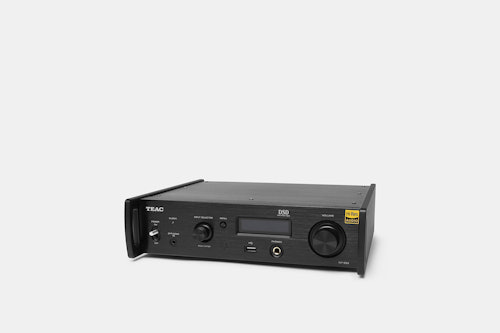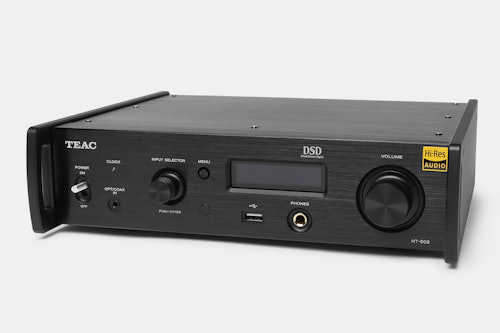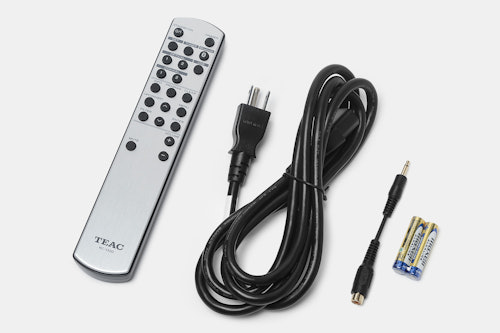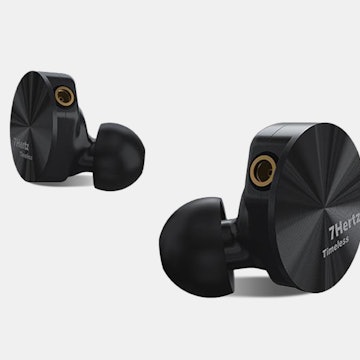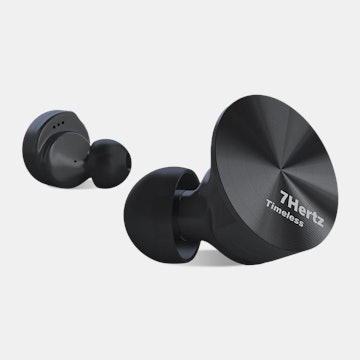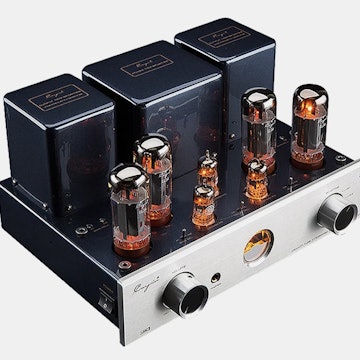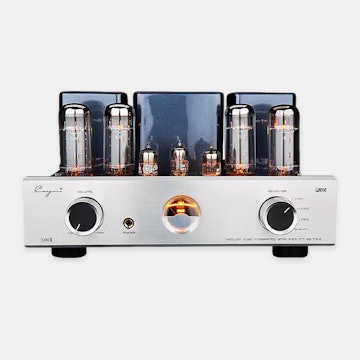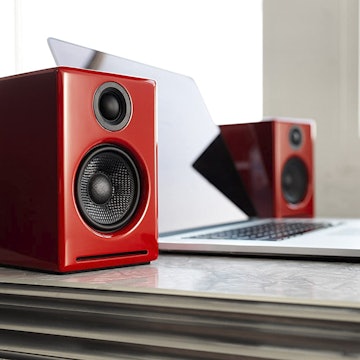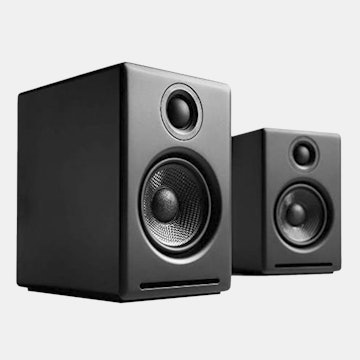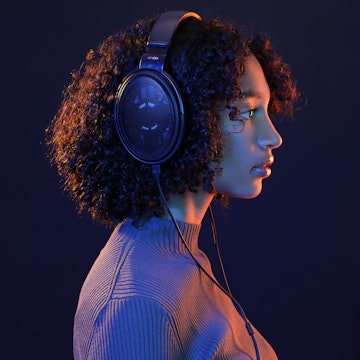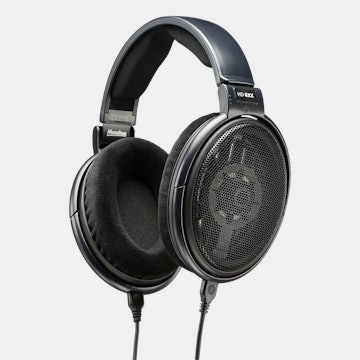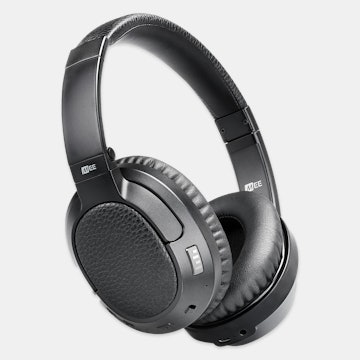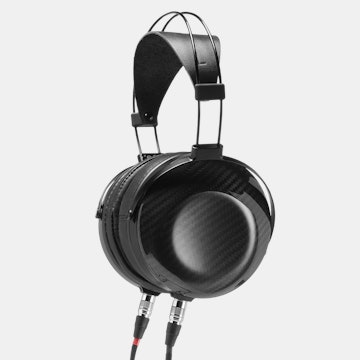Click to view our Accessibility Statement or contact us with accessibility-related questions













TEAC NT-503 USB DAC & Network Player
TEAC NT-503 USB DAC & Network Player
bookmark_border
Where's the price?
To negotiate the best possible price for our customers, we agree to hide prices prior to logging in.
1K requests
·
26 Sold
Product Description
The 2016 winner of Japan’s prestigious Visual Grand Prix award in the “Network Audio” category, the TEAC NT-503 is a versatile network player with a dual-monaural USB DAC. It can play digital audio files from a variety of sources: a computer using a USB port, a network server using an ethernet port, or a USB storage device Read More

search
close
Sort by: Newest
keyboard_arrow_down
SpaceCadet24
639
Sep 29, 2019
To anyone who owns this player:
I want to listen to CDs that have been ripped to a hard drive. I do not want to have music played from a computer or have to leave a computer on. This has 2 USB ports, one on the front and one on the back. It says the front is only for use with a flash drive. I don't want to have any cables sticking out of the front so can I use the rear USB for connecting an external USB hard drive? If so, is there a limit on how large a drive it will recognize or how many files/folders it can handle? If not, what are my options for playing ripped CDs without a computer? Will the App show all of my music with artwork? Extremely important: does this fully support true gapless playback? I need to be able to listen to an album as it would play on a CD player without any gaps between tracks. Any gap and the player is worthless to me.
cledry
79
Sep 29, 2019
Looks like a nice unit based on dual mono design. I am torn between buying this or upgrading my Simaudio 180 Mind to DSD. Right now I have to use 3 items to do what this does, My Moon Mind streamer, Moon DAC and a JDS EL Amp. It sure would be nice to have an all in one unit. My Mind does Tidal, Quobuz, Deezer and with the update would be Roon ready, it is 110-240 volt as standard as well. Tidal and a voltage switch might make it a good replacement with more modern topology than my Simaudio stuff.
ciber
242
Keyboard Club Member
Sep 27, 2019
You can buy jds atom and topping d50s, total cost $300 with better sound than this $650 combo

ElectronicVices
2940
Sep 30, 2019
Why do you and ciber both compare this unit to straight DAC/Amps and not other network players/DAC with variable pre-out, like the stuff from Cambridge, that do cost more than $650? I get that neither of you understands the use case for this type of equipment but that doesnt make it worthy of your ridicule. Not everyone just listens to music in front of/near their PC and Pi's arent for everyone. My buddy is completely PC free but uses tablets and smartphones at home, this type of device is good for people like him.
Despite lack of "tidal integration" you should still be able to push it via DLNA. The xbox one doesnt support Tidal but I can use it as a Tidal endpoint via apps like AK Connect (Groove accepts network streams). To my knowledge that relies on DLNA which this Teac supports. I am not a Qobuz user so cannot speak to a work around there. I came to the discussion section to read peoples thoughts on this device, not copy/paste comments on Topping and JDS.

LuckyLuke575
563
Oct 1, 2019
ElectronicVicesBud, you're talking things that I stopped doing in 2014. You don't need a PC with a Topping; I have a DX3 Pro and I stream to it via Bluetooth from my iPhone. Why do I need outdated, expensive and low spec equipment that needs DLNA and other bullshit to work?
If you want to read people's thoughts, then here it goes; Don't buy this device. It's outdated with low specs. You are much better off with other equipment / combinations for the money. e.g DX3 Pro paired with a decent integrated power amp.
P.S. after this you're on your own.
P.S. after this you're on your own.
(Edited)
Calaverasgrande
1486
Sep 27, 2019
For all the word count in the specs, no mention of samplerate or bit depth?

AdamInHiltonHead
43
Sep 5, 2017
A year ago I scanned an industry Ad for this series from TEAC. I am aware they absolutely make some fine products. HOWEVER - its' really tough for me to see reviews discussing burn-ins and the finer nuances of fidelity on a device (late 2017) that is working with a meager 110db's and 1/2 watt per channel - $700? No MQA? Does the what must be single DAC Chip have a bypass setting to at least chase superior sound when not using the modest Amp? Sorry - not a fan of hater comments but I am sure there are PLENTY of people hear who may recommend better use of your $700.....
ccc888
60
Sep 6, 2017
AdamInHiltonHeadCould you list some better DACs in this price range? Also I would like to point out that this DAC is using dual AK4490 chips.
ccc888
60
Sep 30, 2017
ccc888I ended up buying the oppo sonica DAC, 100 dollars more expensive. I did a comparison between it and the nt503. NT 503 is soft and fuzzy more tube-like sound, oppo is rich, punchy with a slightly bigger and cleaner image. I would say oppo is slightly better, but nt503 is also very easy on the ears.

K.T.N
1264
Sep 4, 2017
I have the UD-503, the non-network version of this DAC.
For the longest time I thought the performance was pretty "meh", and not as musical as my UD-501. I was actually considering selling it.
Then after a fairly long time of using it, the sound became very lucid, clear, and open.
I could discern subtleties in the phrasing and in vocal inflections that made it seem like I was hearing the song for the first time. Or listening to an alternate take of the song that had different, but more musical, detail, inflection, and flow. And yet it was the same recording.
Wow. So it seems to take some time before the music starts to sound good through this. I also recall reading the same from some other reviewer or user.
For the longest time I thought the performance was pretty "meh", and not as musical as my UD-501. I was actually considering selling it.
Then after a fairly long time of using it, the sound became very lucid, clear, and open.
I could discern subtleties in the phrasing and in vocal inflections that made it seem like I was hearing the song for the first time. Or listening to an alternate take of the song that had different, but more musical, detail, inflection, and flow. And yet it was the same recording.
Wow. So it seems to take some time before the music starts to sound good through this. I also recall reading the same from some other reviewer or user.

K.T.N
1264
Sep 30, 2017
No. After listening it to about a month and having it sound basically the same every day, and then one day just reveling in the improvement, no, I didn't just get used to the sound.
I've been in the audio hobby for about 30 years. There are some things I've owned and used that really changed their sound drastically with some use, sometimes suddenly and unexpectedly, sometimes slowly over an extended time.
I've also owned whole bunch of gear that maybe changed some aspect of their sound to some degree over time, but nothing mind blowing (ie, started by sounding somewhat congested, but opened up after some use, but retained the same basic sound quality).
And then there are those that didn't really change in sound quality much if at all over an extended time.
To me, it's really apparent when a sonic change happens. Because over the decades, I've listened to a lot of gear, and I know what works for me in terms of sound quality, ie, pacing, flow, tonality, resolution, liquidity, sense of space, rhythm, naturalness in attack and decay of notes, etc. So I can recognize when those qualities I like are there or not. And I can recognize when there is a change.
So when I listen to a piece of equipment for more than long enough to get a grip on the basic sound quality (ie, a month or so in this case), and then it takes a turn for the better (in this case), I definitely notice that. And it's not just getting used to the sound. I can usually get a grip on that in a couple of days or so.
I think what you are talking about is called "brain burn in". It's when you start listening to a piece of gear which may have a different presentation that what you are currently accustomed to, and your brain accepts that presentation over some period of listening, and you accept that presentation to the extent that you will, you unconsciously overlook the shortcomings, and enjoy the musical presentation in the way it is presented.
I think it's something like watching a play put on by community theater group in a theater with dim, subpar lighting. No, you don't see all the colors and details that you would if you were watching the play in a professional theater, but your brain adjusts and you forget that the light is a bit too dim, and overlook the yellowish cast, and watch the play and enjoy it to the extent that you can. And unless the shortcomings are totally egregious and distracting, you don't think about those things after a while and just enjoy the play.
But here's the thing. Even after you've gotten accustomed to the dim lighting, etc. those colors that you are seeing and the resolution and detail that you can discern will never be the same as if you were in a professional theater with its superior lighting. So your getting used to the lighting will not net you the higher quality experience that you would see in a better theater, no matter how much you get used to it.
So when I hear what, essentially, was a community theater experience change into a professional theater experience, no, I don't think what I was hearing was because I simply got used to the sound, in my opinion.
I've been in the audio hobby for about 30 years. There are some things I've owned and used that really changed their sound drastically with some use, sometimes suddenly and unexpectedly, sometimes slowly over an extended time.
I've also owned whole bunch of gear that maybe changed some aspect of their sound to some degree over time, but nothing mind blowing (ie, started by sounding somewhat congested, but opened up after some use, but retained the same basic sound quality).
And then there are those that didn't really change in sound quality much if at all over an extended time.
To me, it's really apparent when a sonic change happens. Because over the decades, I've listened to a lot of gear, and I know what works for me in terms of sound quality, ie, pacing, flow, tonality, resolution, liquidity, sense of space, rhythm, naturalness in attack and decay of notes, etc. So I can recognize when those qualities I like are there or not. And I can recognize when there is a change.
So when I listen to a piece of equipment for more than long enough to get a grip on the basic sound quality (ie, a month or so in this case), and then it takes a turn for the better (in this case), I definitely notice that. And it's not just getting used to the sound. I can usually get a grip on that in a couple of days or so.
I think what you are talking about is called "brain burn in". It's when you start listening to a piece of gear which may have a different presentation that what you are currently accustomed to, and your brain accepts that presentation over some period of listening, and you accept that presentation to the extent that you will, you unconsciously overlook the shortcomings, and enjoy the musical presentation in the way it is presented.
I think it's something like watching a play put on by community theater group in a theater with dim, subpar lighting. No, you don't see all the colors and details that you would if you were watching the play in a professional theater, but your brain adjusts and you forget that the light is a bit too dim, and overlook the yellowish cast, and watch the play and enjoy it to the extent that you can. And unless the shortcomings are totally egregious and distracting, you don't think about those things after a while and just enjoy the play.
But here's the thing. Even after you've gotten accustomed to the dim lighting, etc. those colors that you are seeing and the resolution and detail that you can discern will never be the same as if you were in a professional theater with its superior lighting. So your getting used to the lighting will not net you the higher quality experience that you would see in a better theater, no matter how much you get used to it.
So when I hear what, essentially, was a community theater experience change into a professional theater experience, no, I don't think what I was hearing was because I simply got used to the sound, in my opinion.
avaneeded
75
Sep 28, 2019
K.T.NHow would you explain it though, i could barely understand how the same piece of equipment will change it's sonic properties if the equipment is the same and components certainly don't suddenly act differently from one day to the next.
tecky1kanobe
36
Sep 3, 2017
renzeromy guess is this is the North American version. sorry my friend, looks like you are out of luck on this one. not sure why they couldn't put a voltage switch on this. electronics get converted to DC then voltage regulated anyways so 110 or 220 doesn't make a big difference in the grand scheme anyways.
Showing 24 of 114
Recent Activity
